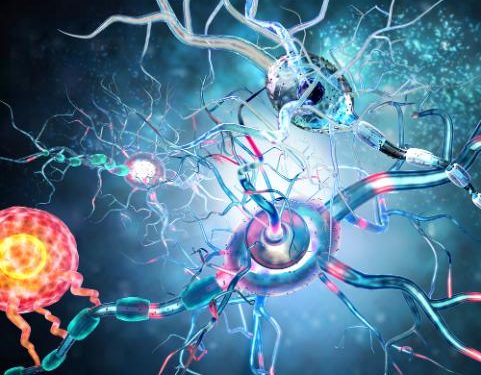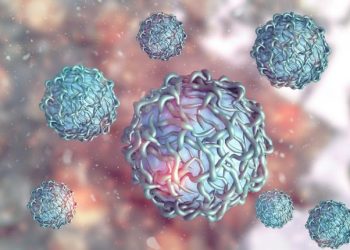Up to 25% of people with RCC don’t get diagnosed until their cancer has advanced. But doctors are better at catching kidney tumors early, especially when they’re smaller and less likely to spread.
Surgery to remove the kidney and possibly nearby tissue (radical nephrectomy). You may also need radiation therapy, immunotherapy or drugs that block proteins that help cancer cells grow.
Diagnosis
Many people with renal cell carcinoma don’t have any symptoms in the early stages. If symptoms do develop, they usually relate to how tumor growth affects nearby tissues or organs. The most common symptom is blood in the urine (hematuria). Other symptoms include a pain in the side of the abdomen or low back (flank) that doesn’t go away; a lump in the abdomen; or swelling of the ankles and legs.
The diagnosis of kidney cancer usually begins with a physical exam and a health history. Your healthcare provider will check your body for lumps, and ask about your past health, any family history of cancer, and your habits, such as smoking and whether you have high blood pressure or heart disease.
Blood tests may also be done to check your blood pressure, electrolytes, proteins and other substances in the urine, and kidney function. A simple test called a urinalysis checks for infection and blood in the urine. Other lab tests include a complete blood count, urea nitrogen and creatinine, which measure how well the kidneys work to filter the blood and get rid of waste; erythrocyte sedimentation rate, which measures the amount of red blood cells in the body; and renal ultrasound and computed tomography (CT).
CT scans use a large magnet and radio waves to create detailed, three-dimensional images of the inside of your body. These can show if there is a mass in the kidneys and how big it is. CT scans can also show if the tumor has spread to nearby tissues or lymph nodes.
Magnetic resonance imaging (MRI) is another way to see the kidneys and surrounding structures without using radiation. It can help doctors tell the difference between a cancerous mass and a cyst or noncancerous fatty tumor called angiomyolipoma. MRI can also show how far a cancer has progressed and whether it has reached the blood vessels that supply the kidneys.
A biopsy is a procedure in which your healthcare provider removes a small piece of tissue from the suspected tumor and checks it for cancer cells. A biopsy is usually done on an outpatient basis.
Once you have a diagnosis, your healthcare team will discuss treatment options. There are several ways to treat renal cell cancer, including surgery, targeted therapy, and chemotherapy. Chemotherapy uses medications to kill cancer cells or prevent them from growing.
After treatment, you’ll have follow-up tests to see if the cancer has returned or spread. You might need other treatments, such as immunotherapy or drugs that target specific genes in cancer cells. These can make the body’s immune system attack the cancer cells more effectively. You might also need other cancer treatments, such as radiation or hormone therapy. Some people with advanced kidney cancer have a better chance of survival if they have the right combination of treatment.
Treatment
The type of treatment you receive for renal cell cancer depends on the stage of the tumor. For stages I and II, when the tumor is 7 centimeters (cm) across or smaller and hasn’t spread to nearby lymph nodes, surgery is usually the first step.
At MD Anderson, doctors use minimally invasive surgical techniques whenever possible. This means they cut fewer incisions, so you heal faster. This also helps reduce complications like bleeding and infection.
If the tumor is larger, your doctor may need to remove more of your kidney. This is called nephrectomy. We can often remove your kidney and surrounding tissue using laparoscopy or robotic surgery. We can also remove just the affected portion of your kidney, which is called partial nephrectomy or kidney-saving surgery. For this procedure, we use high-quality pre-treatment imaging and ultrasound to guide the surgery. We select patients for partial nephrectomy who have favorable tumor location, health problems that could affect the outcome of surgery, and a desire to save their kidney.
Other types of treatment for RCC include chemotherapy and radiation therapy. These can kill cancer cells or slow their growth. They can be taken by mouth or injected into a vein or muscle. Sometimes, chemotherapy and radiation are given together.
You can also have kidney cancer treated with drugs that boost your own immune system’s ability to fight the tumor. These drugs are called immunotherapy agents. Examples include interferon and IL-2. A newer group of drugs, called checkpoint inhibitors, may help your body to better recognize and fight kidney cancer. These drugs include nivolumab and pembrolizumab.
Other types of renal tumors that need treatment include transitional cell carcinoma, which starts in the area where your ureters connect to your kidneys. It accounts for 6% to 7% of all kidney cancers. You might also get a rarer type of kidney cancer, urothelial carcinoma, which grows in the tissues that line your urinary tract. These cancers can grow quickly and spread to other parts of your body.
You might need treatment for other types of kidney cancers that can’t be removed or cured with surgery, including Wilms tumor, a very rare form of pediatric renal cancer that occurs in the area where your ureters connect with your kidneys. You might also need treatment for other types of kidney cancers, such as renal sarcoma, which is less common and begins in the connective tissue of your kidneys or ureters. These cancers can also grow quickly and spread to other organs or bones.
Follow-up
Renal cell cancer can usually be cured if it is diagnosed and treated when the tumor is still localized to the kidney and its immediate surrounding tissue. Even when the tumor has spread to other organs such as lungs and bones, it may be curable in some patients. However, if the tumor is not diagnosed or treated in time and it advances to the stage where it cannot be cured surgically, the patient’s prognosis is very poor.
Patients who undergo treatment for a renal mass will require follow up care, primarily to watch for cancer recurrence. Depending on the patient’s risk factors, their doctor will decide how often they should see their urologist or specialist nurse and have imaging tests done to assess for cancer recurrence. The doctor will also monitor the patient for any side effects from the treatment, such as changes in energy level or weight, urinary tract symptoms, heart rhythm abnormalities or blood pressure fluctuations.
For a significant number of patients with clinically localized renal masses, active surveillance (AS) with delayed intervention is an option to consider. The rationale for AS varies from patient to patient, but a common framework includes consideration of risks of intervention versus competing mortality vs. oncologic benefit, patient preference and the likelihood of a response to systemic therapy.
It is recommended that a pre-treatment biopsy be performed in all patients with a renal mass who are considering AS. A morphological evaluation is important to determine whether the mass is a renal cell carcinoma or a non-cancerous renal cyst. Distinguishing between clear cell and granular cell carcinomas is critical, as the former has a more favorable prognosis.
A recent multicenter study evaluated the impact of cytoreductive nephrectomy in patients with locally advanced renal cell cancer, including those with a grading system score of 3 or higher. The study found that nephrectomy resulted in improved overall survival compared to patients who were observed on active surveillance alone. However, due to the limited availability of randomized data in this patient population, it is unclear if intensive monitoring improves patients’ outcomes.
While there is no consensus on the optimal monitoring strategy for RCC, most experts recommend a follow-up schedule that includes a yearly abdominal ultrasound in patients who have had partial nephrectomy and a CT scan of the abdomen every three months in those with a complete tumor resection. This is similar to the monitoring regimen that has been recommended for patients who have undergone radical nephrectomy. Those with residual tumor should be evaluated with more frequent imaging to better define the extent of the remaining disease. Detailed discussion with the patient is recommended to help facilitate compliance with these recommendations. Patients with a negative prognosis should also consider other palliative options, such as the use of targeted therapies or immunotherapy.









